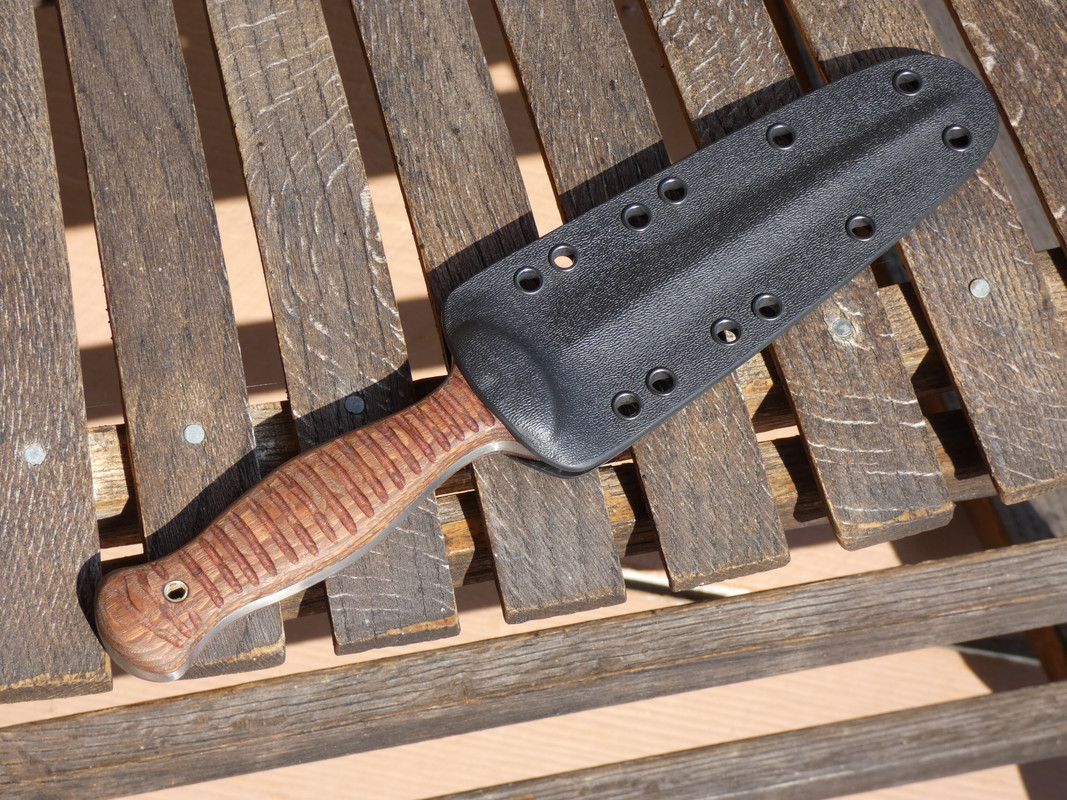not2sharp
Platinum Member
- Joined
- Jun 29, 1999
- Messages
- 20,448
It shouldn’t be a surprise to any of you that I am fascinated by knives. The variety of these tools domestically, historically or culturally is endless. From shards of rock to latest innovation in steel, machinery and art, man has always needed a tool with which to rend things; and whenever I encounter a new edge tool I head to the internet to discover whatever information is available.
This has often led me to Youtube reviews, including the numerous destruction testing videos posted by Joe X. His channel is only vaguely informative but his antics are so over the top that he literally bleeds for his audience. It’s only a matter of time before he seriously injures himself. Like many of you, I often find myself thinking ”You idiot that is not how you are supposed to use a knife.”
Which brings me to the subject of this thread. No matter how crazy Joe X might be, there is little or no discussion on how knives should actually be used. To be sure there are libraries packed with self defense, bushcraft and cooking techniques; but, only vague information regarding the knives themselves. The makers seem to produce knives in a variety of popular shapes with only the slightest thought on how that specific knife advantages the user. There is little or no indication of whether the product is fit for a specific purpose. We are each left to our own intuitive assumptions based on the general appearance of the thing.
This often leads to malfunctions and inefficiencies, such as using way too heavy a knife to clear too much of a trail or putting the wrong edge on a blade which was not designed to support it. A knife might excel at processing game and yet perform poorly in breaking down boxes. Clearly not all knives are adequate for a specific purpose or process, and blade geometry, weight, composition, balance, heat treatment, etc. helps to determined that suitability. There is likely a reason for the vast variety of edge tools and perhaps we should spend more time discussing how the specific tool should be used and less time worrying about whether it is made from the latest material or follows the current fad.
Makers should step back from making fighters or utility, tactical or traditional, knives in known patterns and instead approach the blackboard as a blank slate determined to come up with the best design for a specific use. Rather than going the usual Jack of all trades master of none approach they should focus on function. At least then we might be better justified in holding on to a collection of knives since each knife would in some way be optimized for a given task.
Lets discuss.
n2s
This has often led me to Youtube reviews, including the numerous destruction testing videos posted by Joe X. His channel is only vaguely informative but his antics are so over the top that he literally bleeds for his audience. It’s only a matter of time before he seriously injures himself. Like many of you, I often find myself thinking ”You idiot that is not how you are supposed to use a knife.”
Which brings me to the subject of this thread. No matter how crazy Joe X might be, there is little or no discussion on how knives should actually be used. To be sure there are libraries packed with self defense, bushcraft and cooking techniques; but, only vague information regarding the knives themselves. The makers seem to produce knives in a variety of popular shapes with only the slightest thought on how that specific knife advantages the user. There is little or no indication of whether the product is fit for a specific purpose. We are each left to our own intuitive assumptions based on the general appearance of the thing.
This often leads to malfunctions and inefficiencies, such as using way too heavy a knife to clear too much of a trail or putting the wrong edge on a blade which was not designed to support it. A knife might excel at processing game and yet perform poorly in breaking down boxes. Clearly not all knives are adequate for a specific purpose or process, and blade geometry, weight, composition, balance, heat treatment, etc. helps to determined that suitability. There is likely a reason for the vast variety of edge tools and perhaps we should spend more time discussing how the specific tool should be used and less time worrying about whether it is made from the latest material or follows the current fad.
Makers should step back from making fighters or utility, tactical or traditional, knives in known patterns and instead approach the blackboard as a blank slate determined to come up with the best design for a specific use. Rather than going the usual Jack of all trades master of none approach they should focus on function. At least then we might be better justified in holding on to a collection of knives since each knife would in some way be optimized for a given task.
Lets discuss.
n2s
Last edited:



